This post may contain affiliate links. Please read our disclosure policy.
What’s the best non-toxic cookware? I get asked all the time about what pots and pans I use when cooking. I do everything I can to make sure I’m using non-toxic cookware, but I also know there’s so much information out there on what’s considered “good” and what’s “bad” that it can get overwhelming. BUT, look no further! I’ve asked my dear friend Aida Garcia-Toledo from Non-Toxic Munchkin to share her expertise to help you with your search!
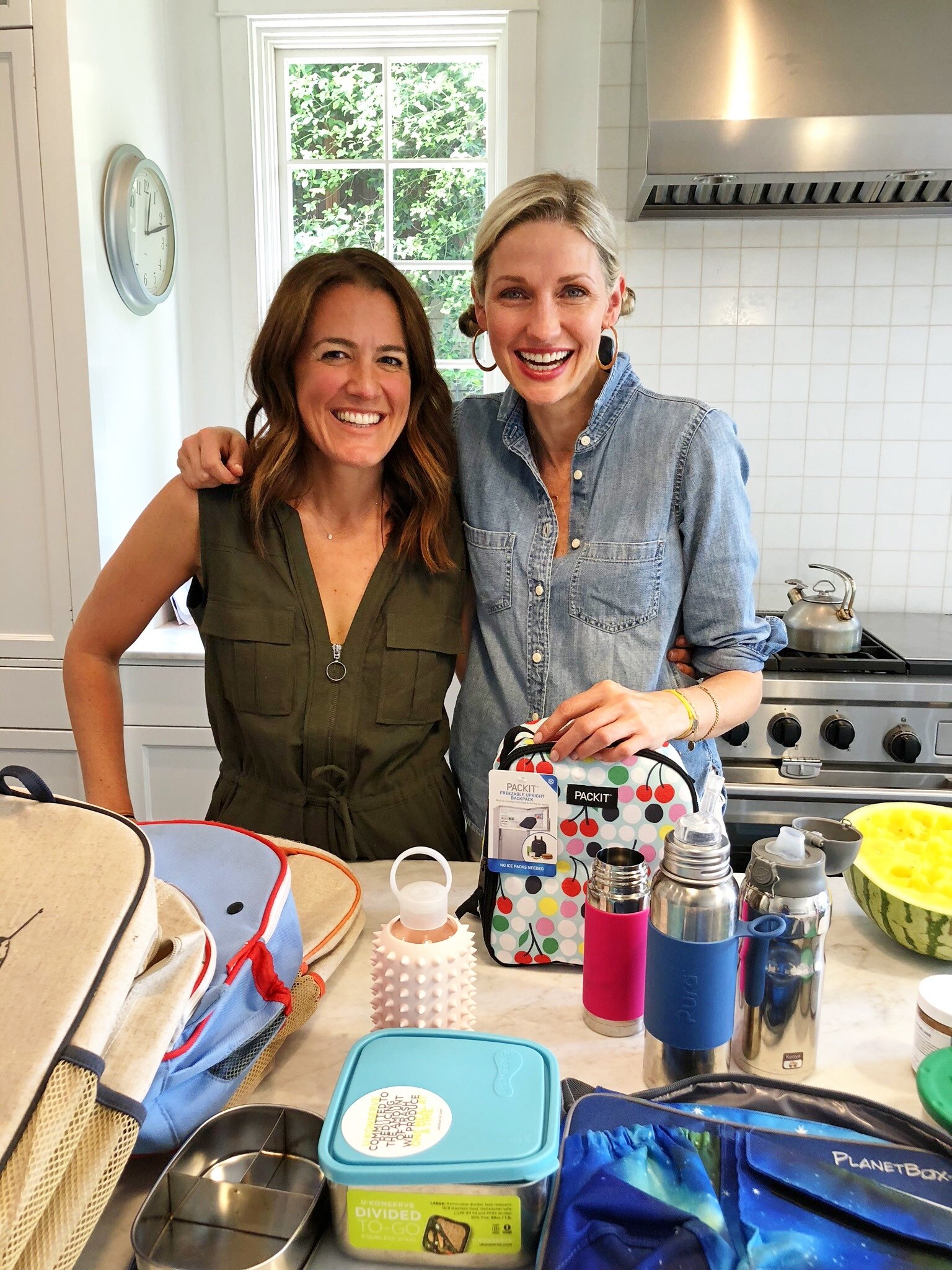
Here’s what Aida had to say about detoxing your life of harmful chemicals and finding the best non-toxic cookware:
“One of the most important switches to make when you are looking to ‘detox’ your life of known harmful chemicals are your pots and pans. There really is no sense in cooking the healthiest food in the world if you are cooking them on pots and pans that are infusing your food with known neurotoxins or carcinogenic chemicals.”
Aida laid it out for me on what to look for (and what to avoid) when buying cookware.
1. AVOID:
- Non-Stick Pans
Most popular non-stick pans are still filled with very toxic fluorinated chemicals. We are all probably familiar with the infamous cancer causing Teflon – but Teflon (PTFE) has actually been phased out. Unless you are cooking on older (pre 2013) pans, it is not Teflon you should necessarily be worried about.
PFAS is a family of chemicals (PTFE/ Teflon is a member of that family, as are the well known PFOA and PFOS) made up of over 3,000 different chemicals. This family is known for its non-stick and water repellant capabilities.
When word (and lawsuits – to date the 2 chemical companies that produced these chemicals have paid over $1.5 BILLION in settlements in just two US states!) got out that Teflon was linked to cancer, manufacturers of Teflon agreed to phase it out. However, when they eliminate PTFE, PFOA and PFOS (PFOA is used to make PTFE and PFOS is a similar chemical which has also been phased out) they replace them with other, lesser known (and lesser studied) PFAS chemicals – Teflon’s ‘cousins’. Because these new pans did not contain the known cancer causing chemicals, manufacturers labelled the new pans as “PFOA, PFOS and PTFE free” leading the public to believe that they must be safe.
These ‘cousins’ are slowly being studied and are being found to be just as bad, or even worse, than the originals.
GenX and PFBS: These PFAS cousins might not be household names, but they have slowly made their way into many US households as they have become the two go-to replacement chemicals for PFOA and PFOS
Animal studies have shown Gen X can harm: the kidney, blood, immune system, developing fetus, and especially in the liver following oral exposure. The data are suggestive of cancer.
PFBS : Animal studies have shown health effects on the thyroid, reproductive organs and tissues, developing fetus, and kidney following oral exposure. Overall, the thyroid and kidney are particularly sensitive to PFBS.
Bottom Line: I avoid buying ‘non-stick pans’ even if they are labelled as “PFOA / PTFE/PFOS free”. This is why I think it is prudent to avoid all non-stick coatings in cookware.
- Aluminum pans
Aluminum pans look like stainless steel, cost less, are lighter in weight but can expose you to a very well studied and harmful heavy metal.
Aluminum is a known heavy metal that is a neurotoxin; this means it affects/alters the structure or function of our nervous system – which includes our brain. Because of aluminum’s effects on our brains, even at low levels, constant exposure to small amounts through cooking is concerning especially for women who are pregnant and young children Additionally, aluminum exposure has been studied for its potential link to Alzheimer’s disease for many years.
2. Proceed with Caution with these
If these are not provided I would consider looking elsewhere.
- Ceramic pans
Some ceramic contain glazes that contain heavy metals like lead. As an NPR Article on the topic explains: “Ceramic ware is glazed before entering a kiln to bake. These glazes sometimes contain lead to give products an attractive shine… If ceramics are baked for long enough at hot enough temperatures, they may still be safe, but if not, the lead can leach into food and cause lead poisoning. Acidic food or drink is especially likely to cause lead to leach out of ceramics”
There are no safe levels of lead – especially for children, who may suffer developmental delays, hearing loss and seizures, among other symptoms if exposed to even low levels of lead.
You can use an at home lead testing kit to confirm if lead is present on the surface of any ceramic cookware.
I’ve been using this cookware from Caraway Home and loving it, but there are so many greats options on the market today.
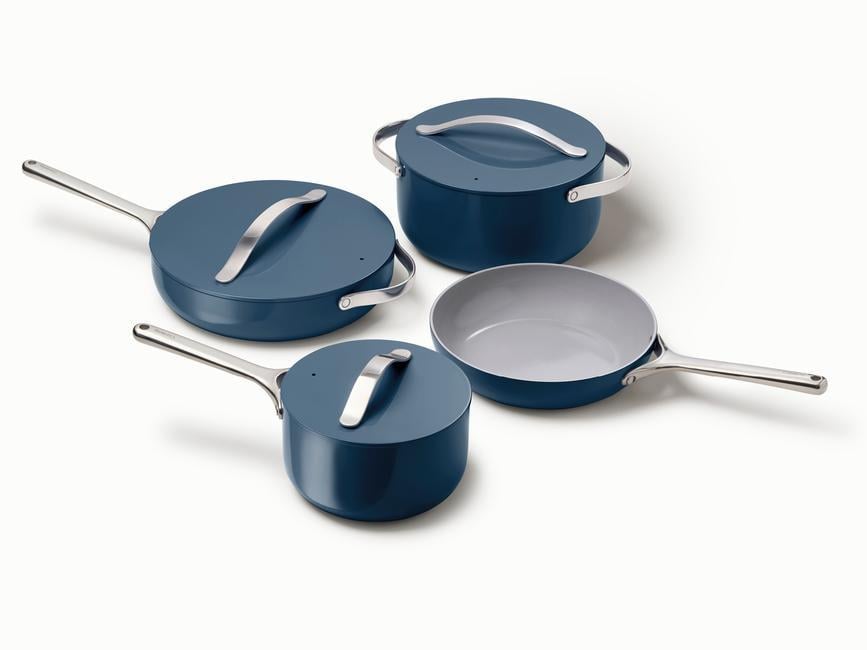
- Porcelain Enamel
Porcelain Enamel is usually made of cast iron with an enamel coating. The main worry with any coating is the potential for there to be lead in the enamel. If you choose this type of cookware it is really important to make sure you find a brand that is certified lead free and – if you are concerned- you could always buy a lead home testing kit and test it yourself.
Le Creuset has been tested a lot and has come out as a safe, lead free, alternative. They have, however, had reports of some of their models testing positive for lead in the exterior of the pan in the past. The inside (cooking side) has never tested positive for lead.
3. What I use at home
I will preface this section by saying one thing: I am a strong believer that everything in excess can be bad. I seriously believe that when it comes to cooking it is important to rotate, and use a variety of (the following) materials and not necessarily rely on only one type. It is all about balance, guys!
- Cast Iron:
These pans can last you generations if you take care of them. They are heavy and require a different way of cleaning (you don’t clean them with soap and water, but instead with coarse salt and keep them season to prevent rusting) – but I still love them. Many of us are deficient in iron so the iron that a cast iron deposits into your food can actually be beneficial BUT excess iron is not good so – as I mentioned before- don’t cook every single meal in a cast iron.
What I love about cast iron is that it can be non-stick AND lasts forever. I can’t live without my everyday grill pan, griddle for pancakes and eggs or flat grill/griddle combo. It’s also available in muffin pans, waffle pans, and also the classic skillet. I’ve also found a company called The Field Company that makes a lighter, smoother cast iron skillet that I really like.
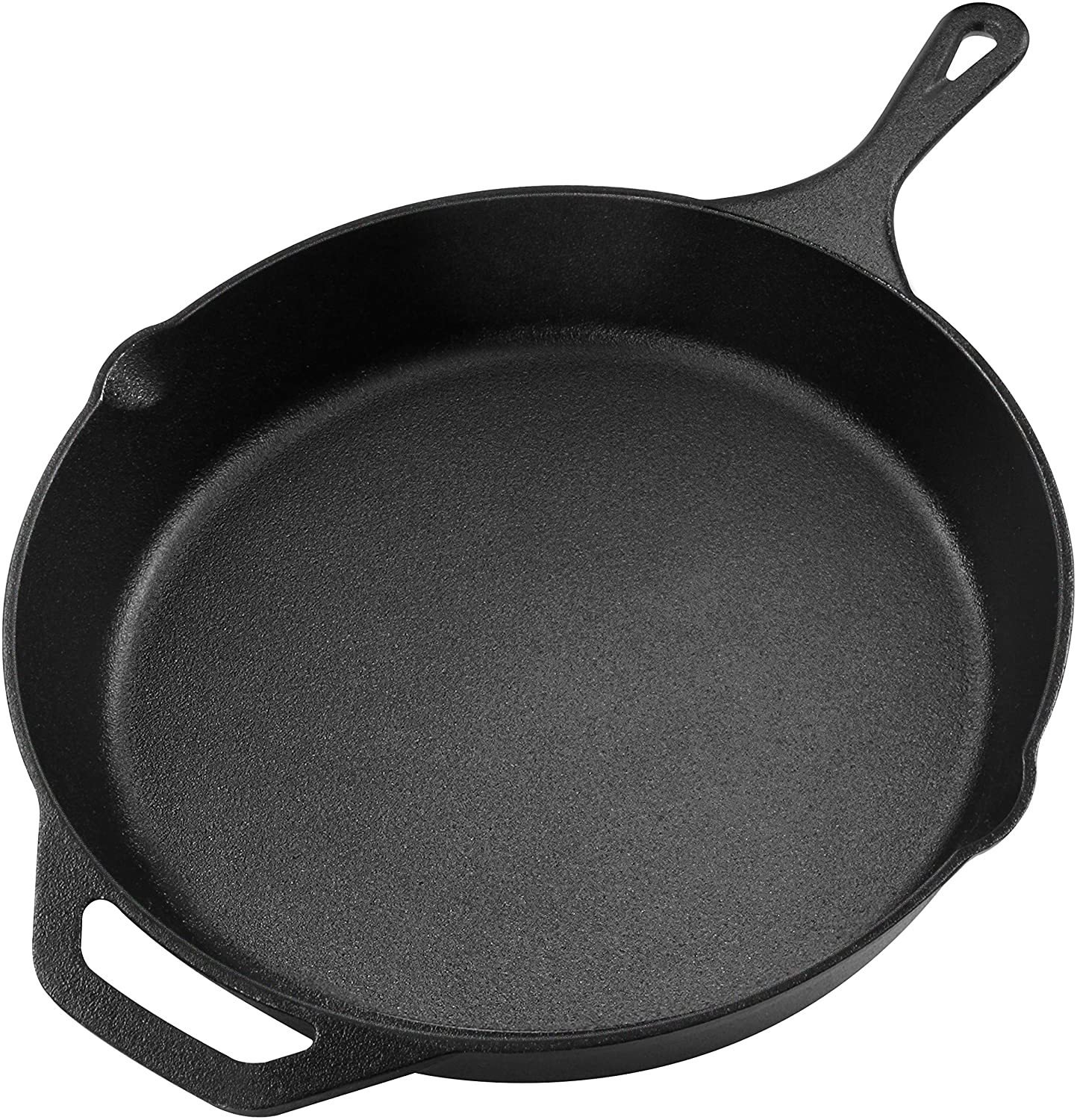
- Stainless Steel:
I (Aida) was lucky to have been gifted a complete set of stainless steel All Clad pans for my wedding 13 years ago and they are still going strong. These are the pots and pans I use the most (although I do rotate with cast iron and glass) and, with a little bit of practice, can be non-stick too.
One thing to note about stainless steel is that, if exposed to a very acidic environment for an extended period of time, it can leech nickel into your food…. for me, this means not leaving tomato sauce cooking for hours in stainless steel, but other than that these pans are considered non-toxic. The other downside is the cost. High quality stainless steel pans (like those made by All Clad) can be expensive. However, considering mine are over 13 years old and look like new, I truly believe they are worth the investment.
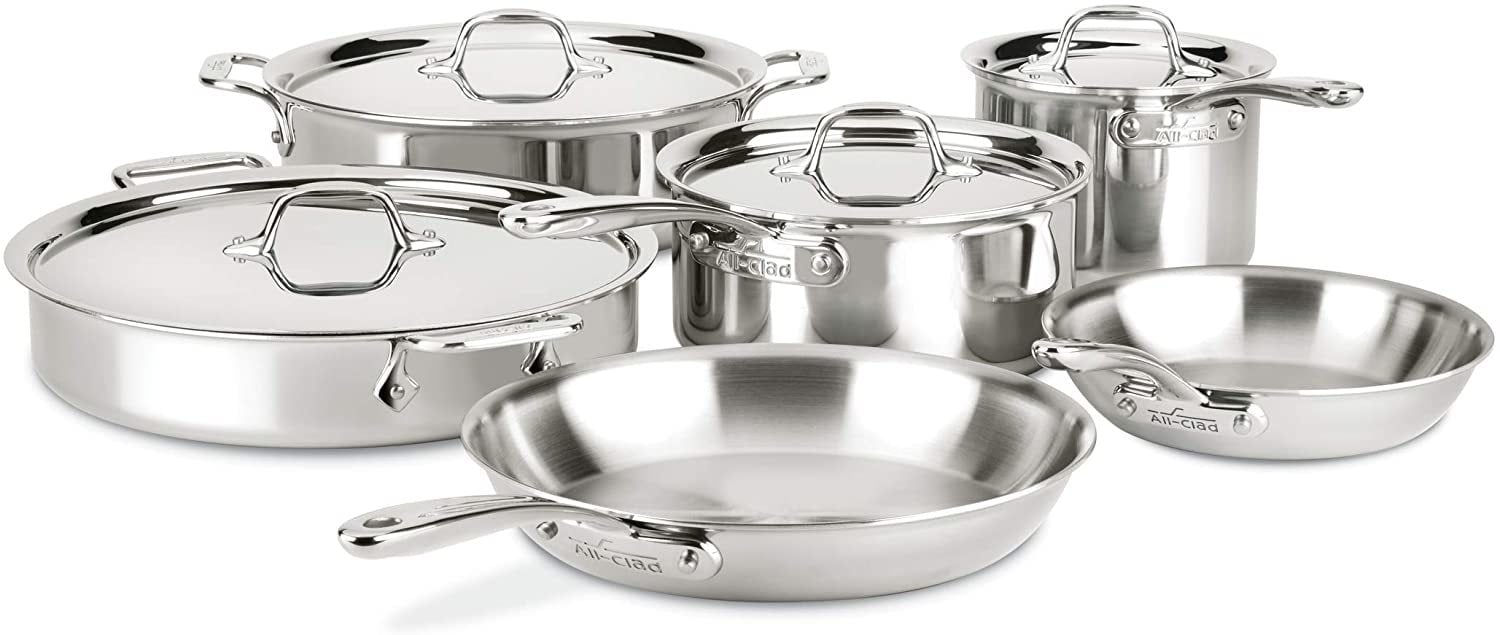
- Glass:
A great alternative for baking- glass is inert and will not expose your food to chemicals. Pyrex is a well known and safe glass brand we use at home. This Pyrex Baking set is all you’ll ever need for making easy quickbread recipes, hearty casseroles, delicious quiches and more.
I also use glass storage containers from Wean Green that I love because they’re reusable and safe! Check Wean Green out at here!
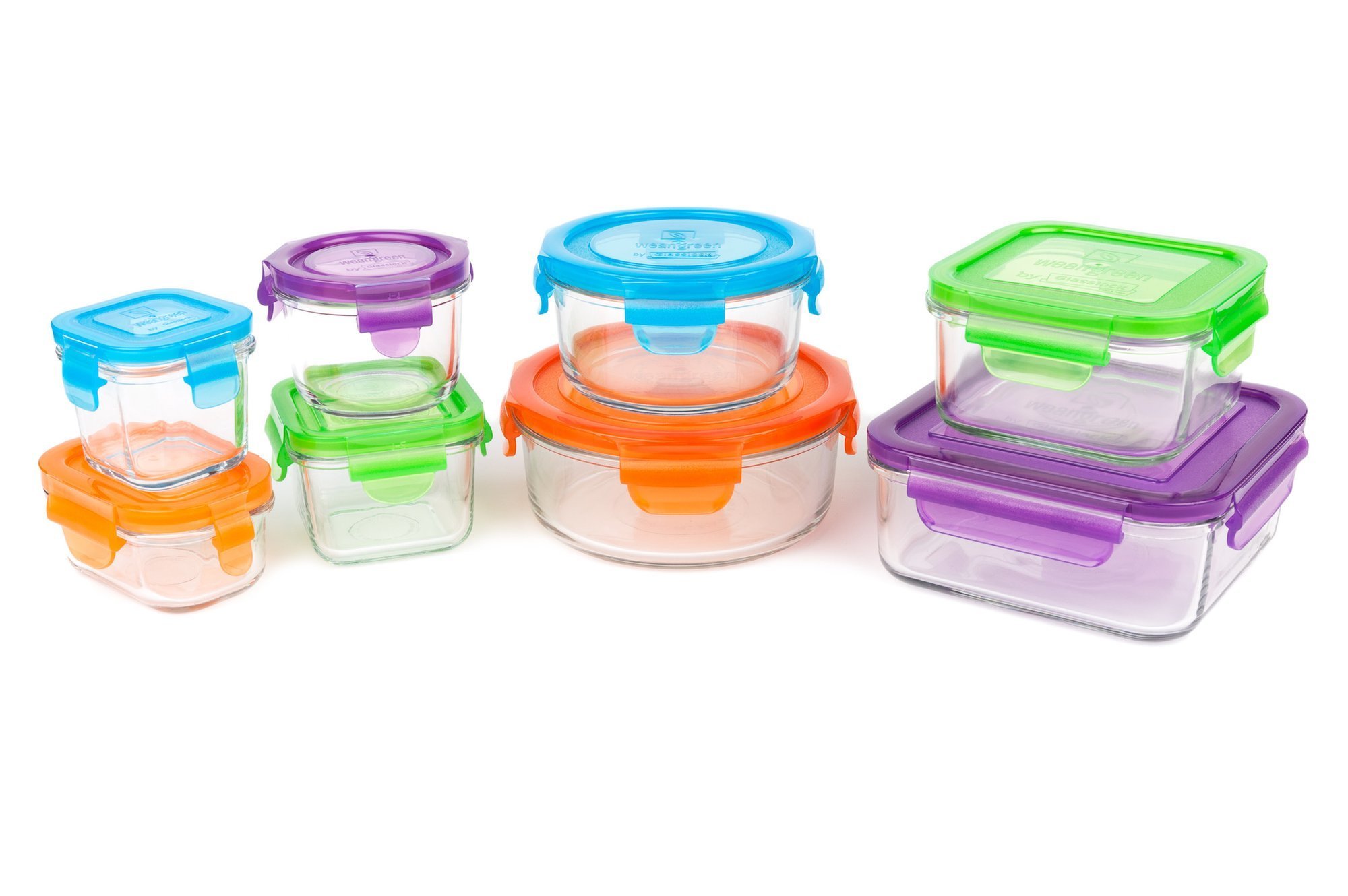
It takes a bit of research, but I hope that all of this info helps you with your search. If you’re looking for more information on living a non-toxic lifestyle check out NonToxicMunchkin.com and follow Aida on social media.
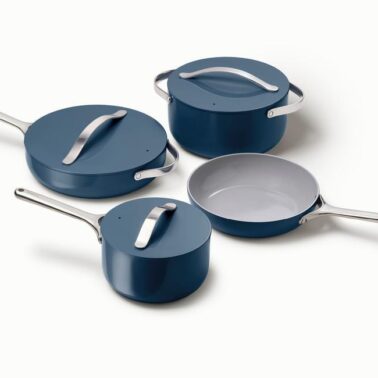
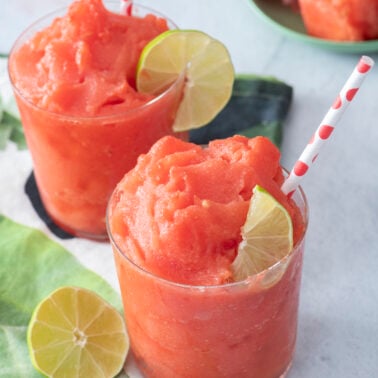
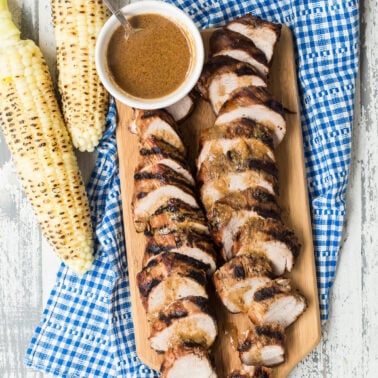
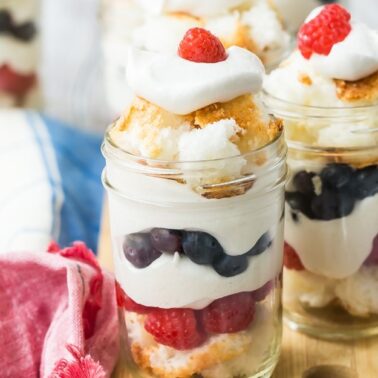
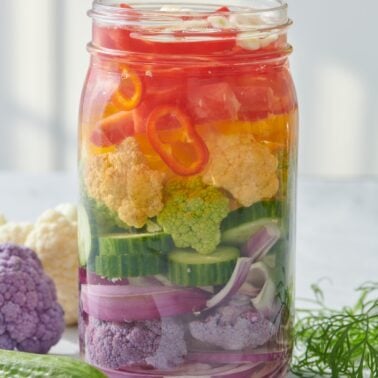
Hello! Thank you for this informative post! I do have a question. Which type of pan would you cook tomatoes in, so a homemade pasta sauce or a tomato-based soup? Thank you again!